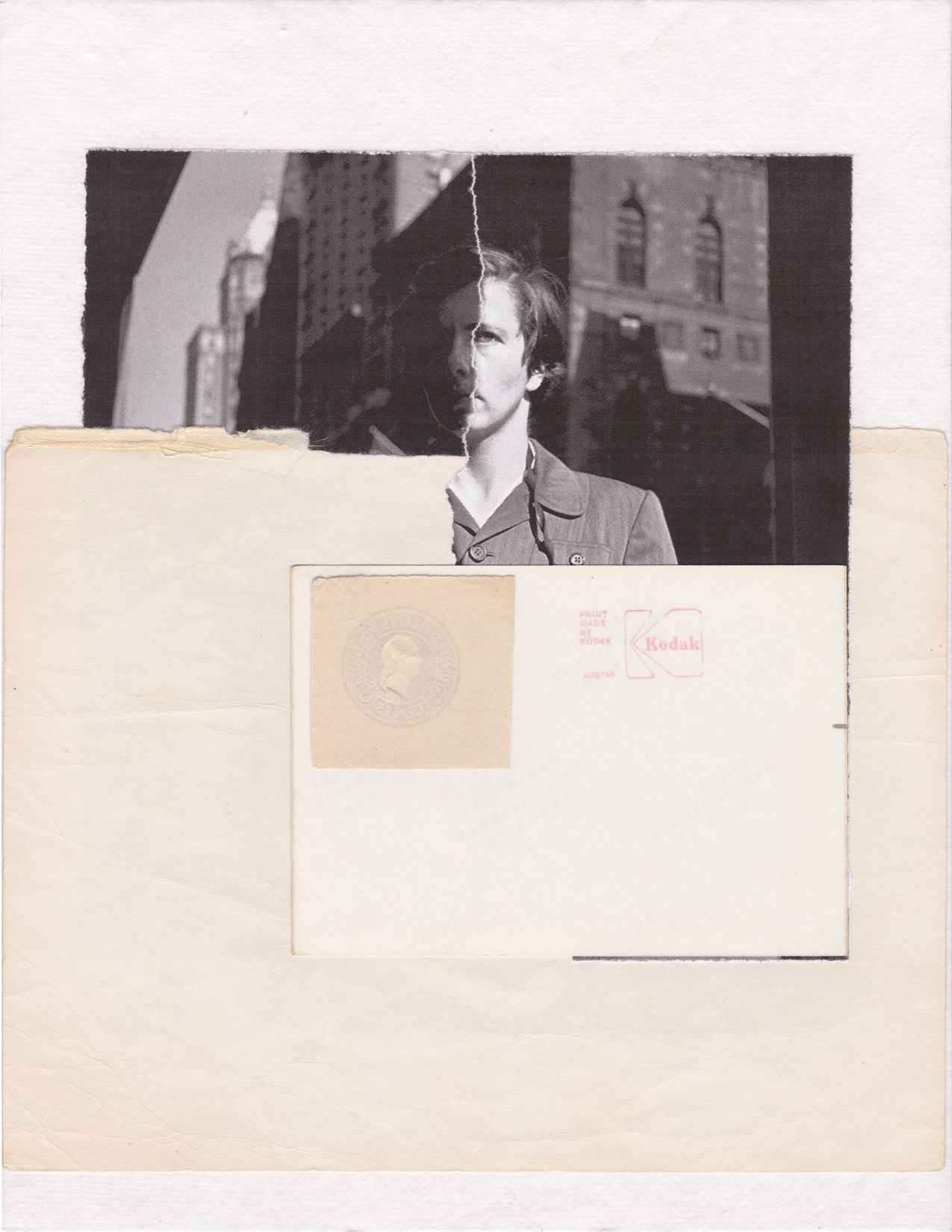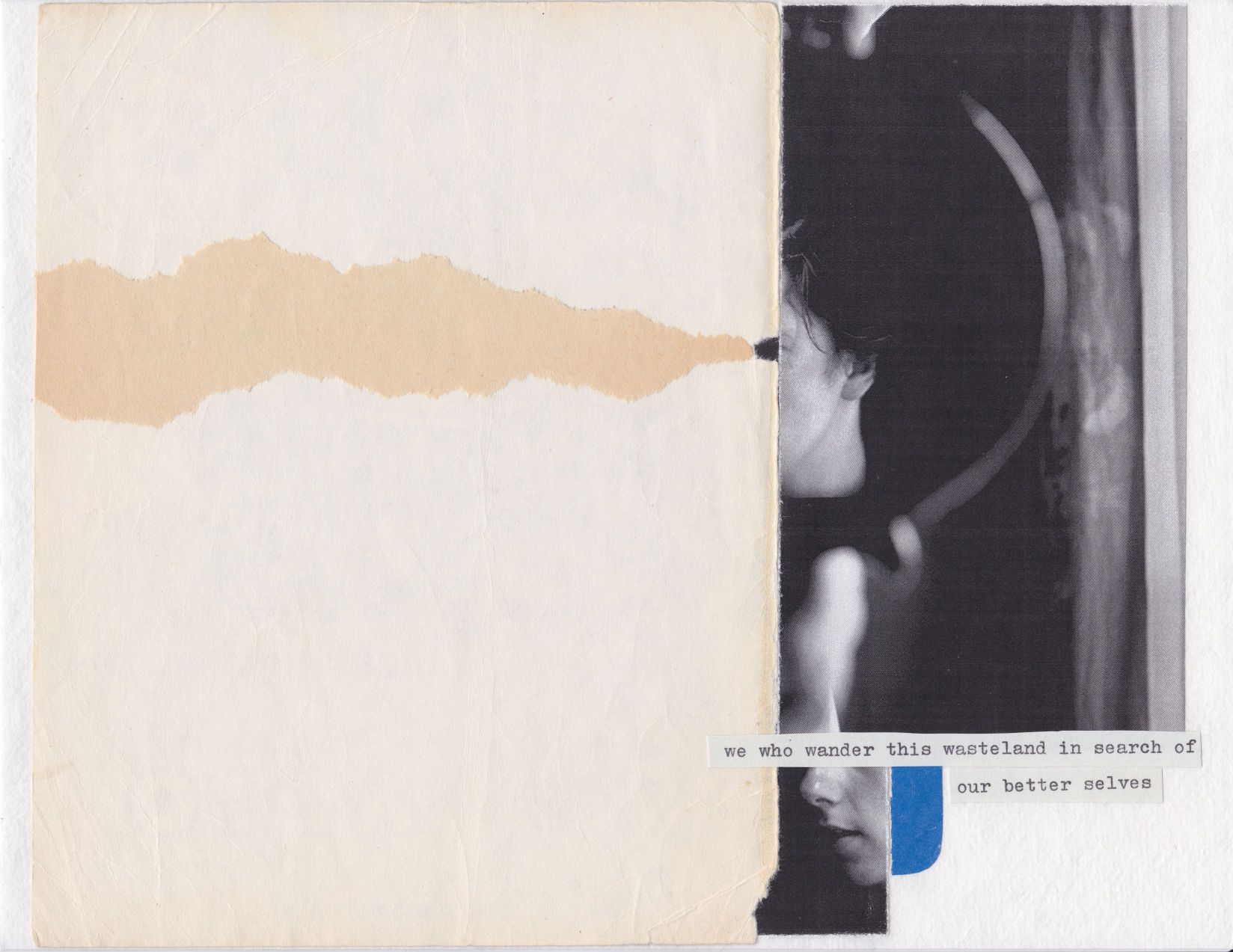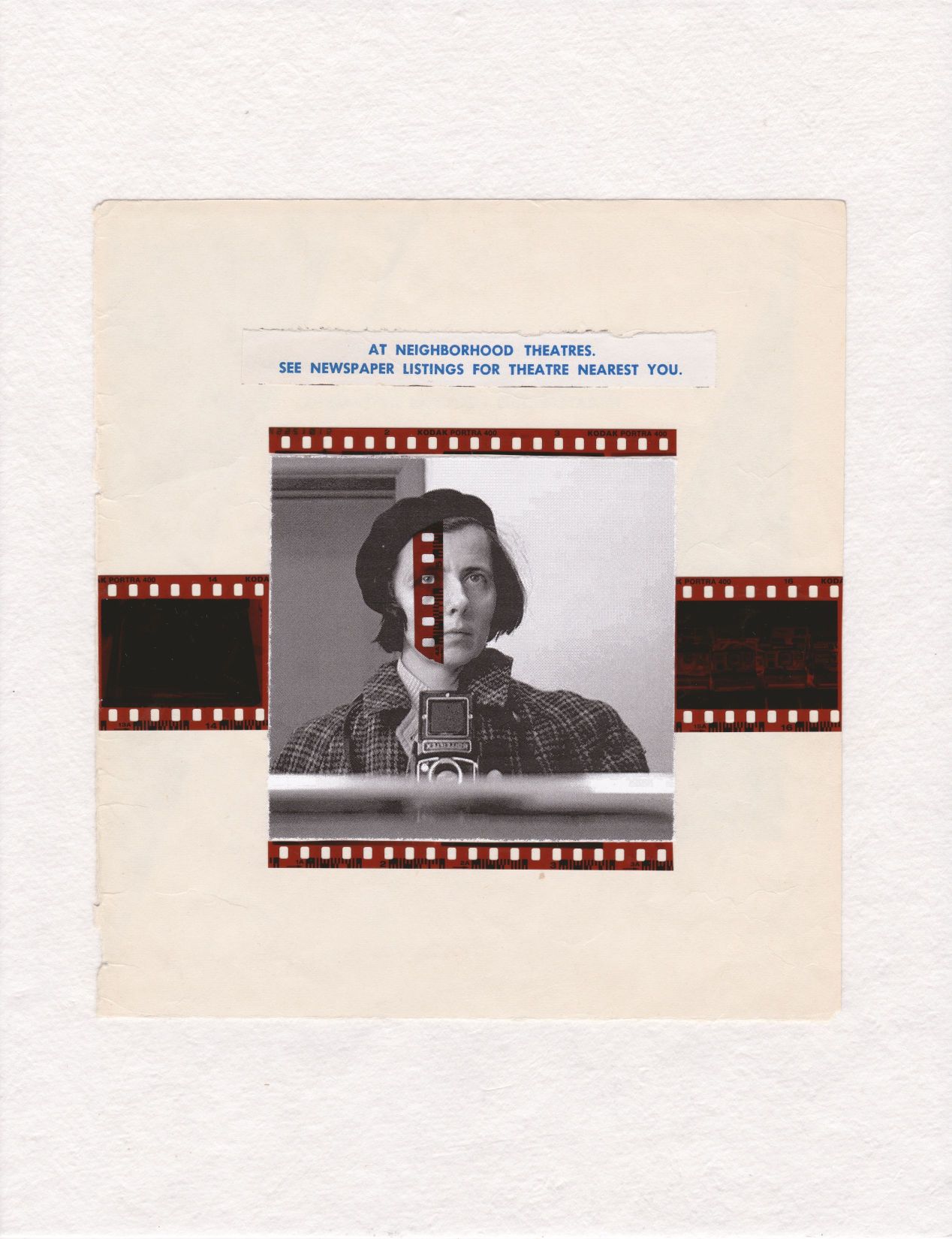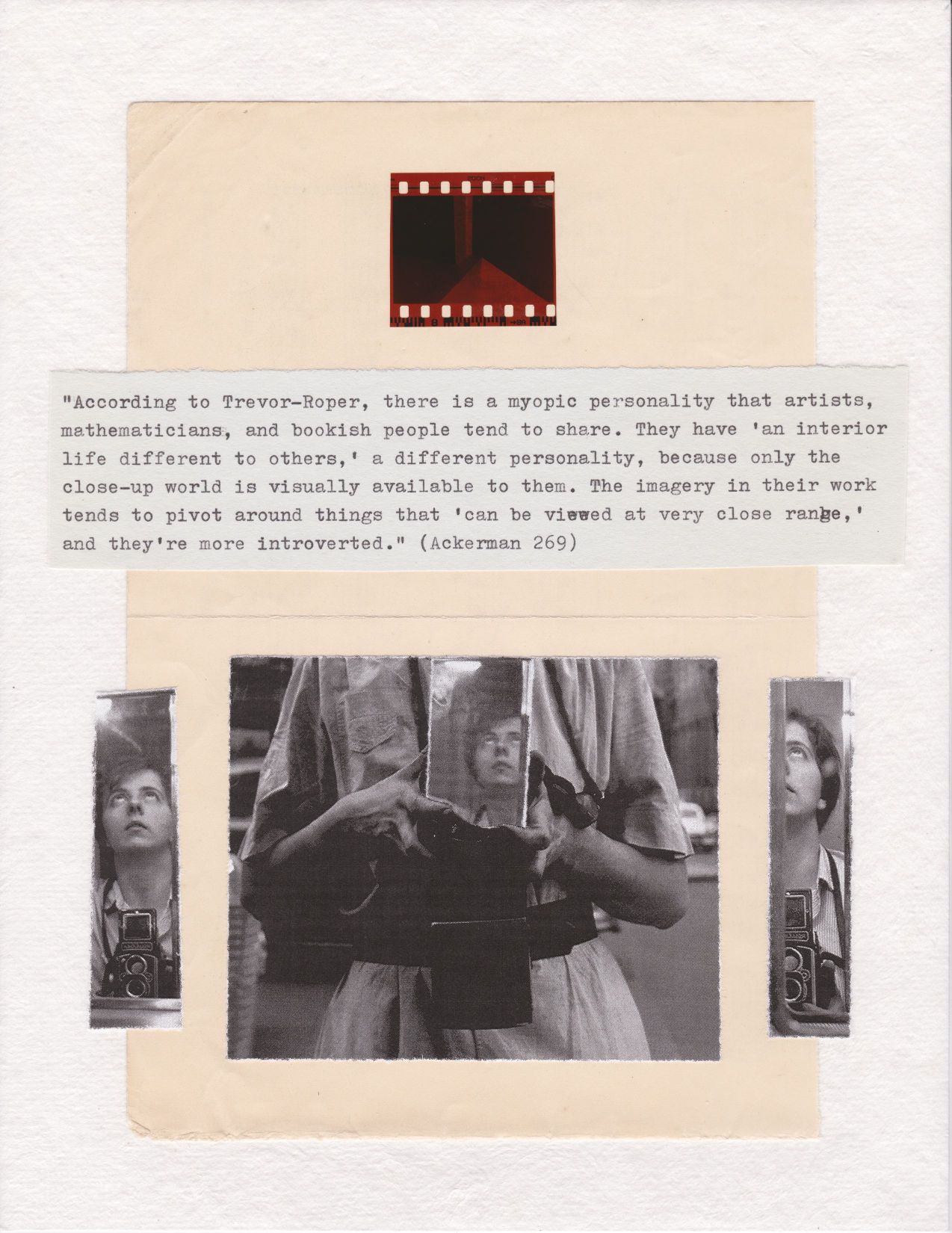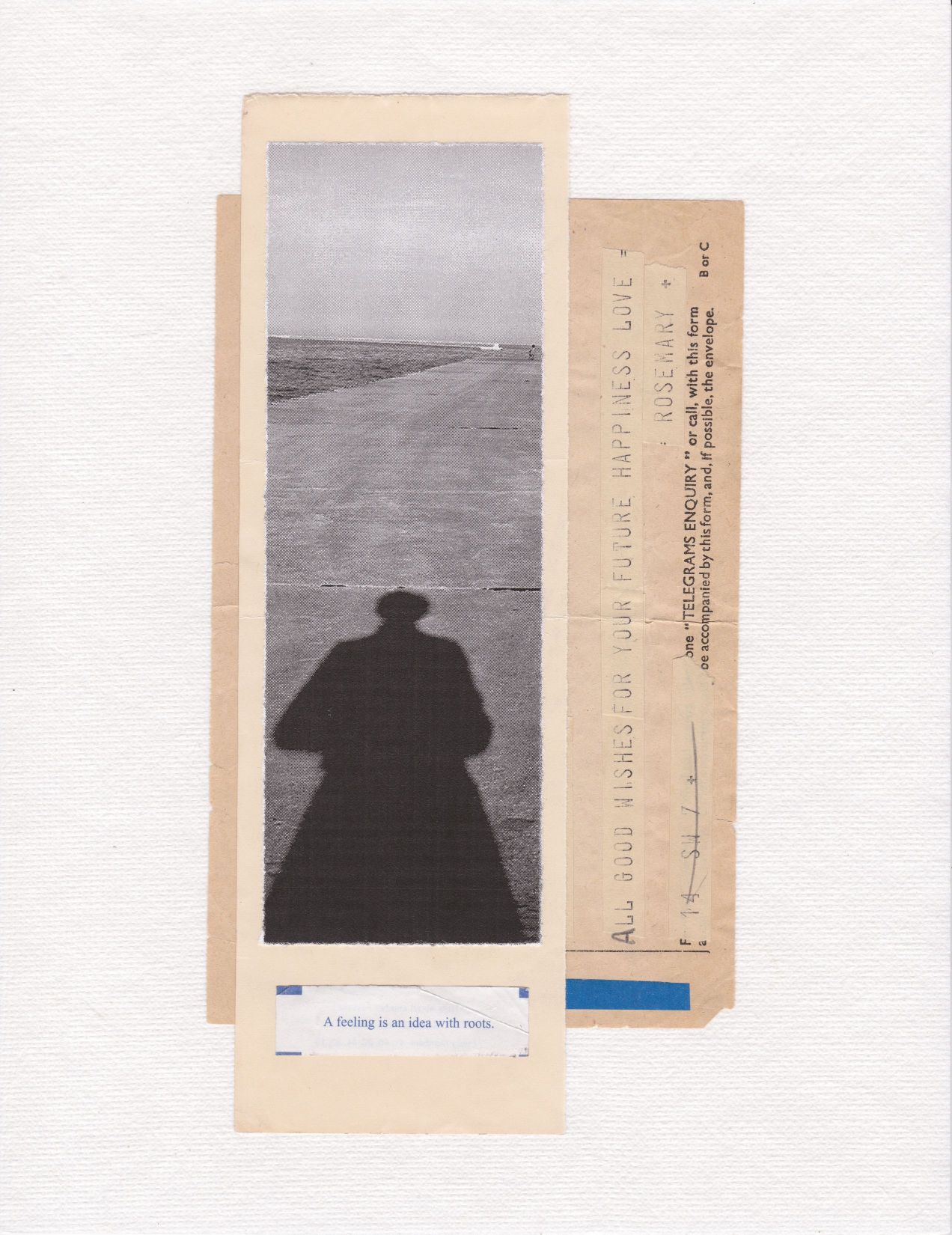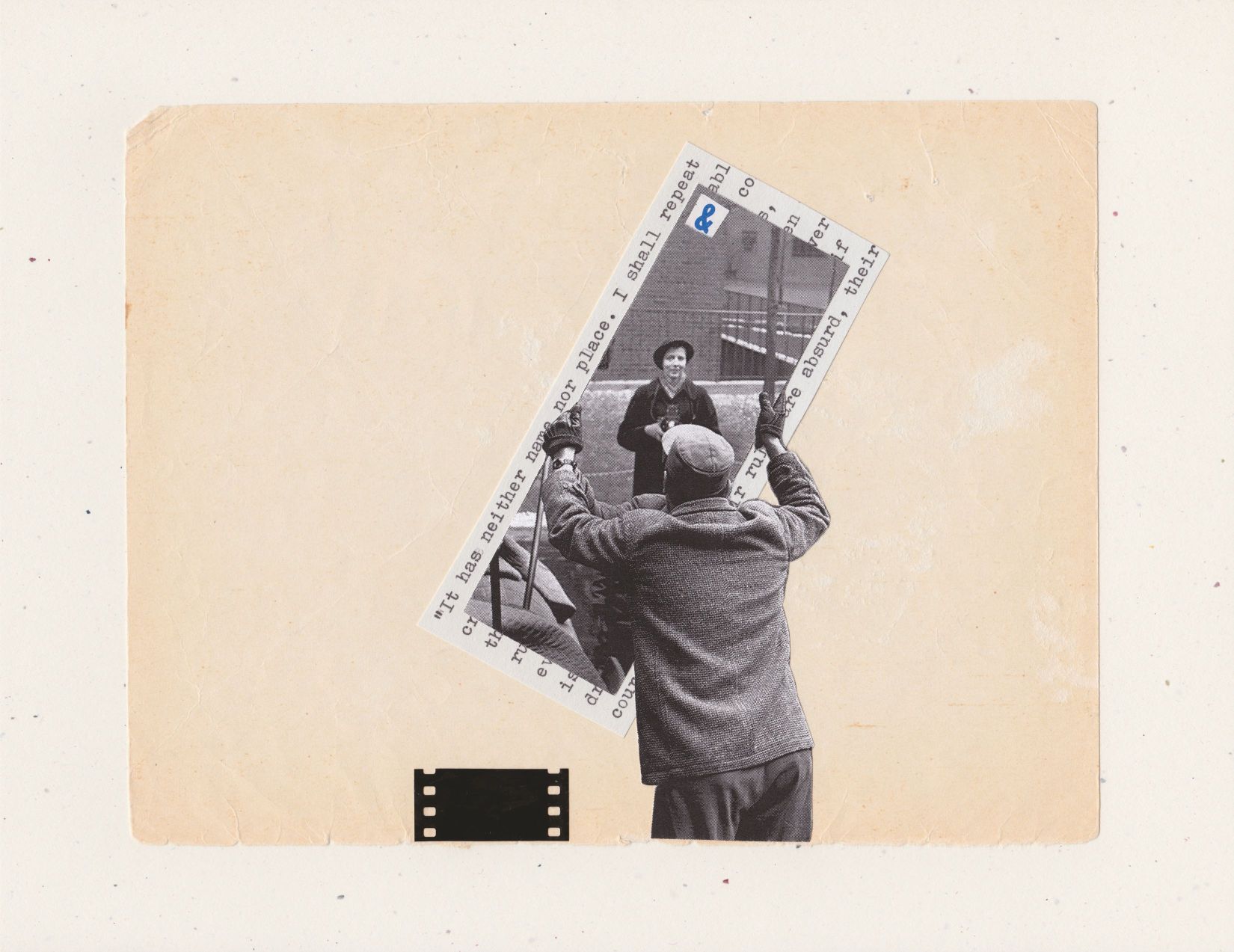Nothing New Under the Sun
Phoebe Pan
“We have to make room for other people. It’s a wheel: you get on, you go to the end, and someone else has the same opportunity to go to the end, and so on, and somebody else takes their place. There’s nothing new under the sun.” —Vivian Maier
“You don’t make a photograph just with a camera. You bring to the act of photography all the pictures you have seen, the books you have read, the music you have heard, the people you have loved.” —Ansel Adams
Despite her admired presence in the photography community, Vivian Maier (1926-2009) has remained something of an enigma. The facts are sparse: she was born in New York City and worked most of her life as a nanny and care-giver in Chicago. She never married and had no children. Her first camera was a Kodak Brownie box, and it was not until 1952 that she began shooting with the twin-lens Rolleiflex that has become a signature in her self-portraits. She processed rolls of film in her bathroom and never showed them to anyone. Her work was discovered only two years before her death.
Contemporary biographies of Maier rely on speculation and interpretation; collectors run the risk of distorting and mythologizing her. As it stands, it seems that the truest way of getting to know Maier is by examining the negatives she left behind. We glimpse her through the people she photographed and the places she frequented, and her self-portraits reveal a distinct visual language of the body situated in specific physical and temporal environments: a face half-obscured on a New York City street in 1953, a reflection idling on the sidewalks of Bangkok in 1959. Nearly all of these images involve mirrors or shadows of some kind. When Maier took a photo of herself, what resulted was not simply a vanity shot—there was always too much of the world in her photos for them to be solely about her.
Recently, I have been thinking about the role of the critic in conversation with Maier’s photographs. We may entertain the thought of a poet’s identity refracted in her stanzas, or films as representative of a director’s obsessions, or novels as palimpsests of an author’s life; what of the critic’s identity? Hers emerges through observing and engaging with things of the world: brush strokes, light sources, odd turns of phrase, the shapes of arguments. Criticism becomes a type of oblique self-fashioning, with the critic stating her presence through attention to a work of art.
“Nothing New Under the Sun” is a set of six paper collages that considers Vivian Maier’s self-portrait photographs as analogous to the work of a critic. These collages are themselves both works of self-portraiture and pieces of visual criticism: that is to say, self-portraiture through criticism. Here, identity is captured not with solipsism, but with what one collects, the scraps of paper and film we use as placeholders for love, the quotes and images that form constellations of care in our minds.
Over the years, I’ve grown averse to the idea that one’s identity comes from isolation, ‘originality,’ or a singular point of genius. I’m more interested in expressions of identity that acknowledge their formation in terms of debt or necessary relations to others. Criticism and collage create natural spaces for such expressions, asking: “What do I owe to this piece of art? What has it given me, and what can I give in response to it?” The books we read, the music we listen to, the art we encounter and cannot jostle from our minds, are communal articulations, gestures of desire to join our lives with others so that we can be supported in the identities we aspire to.
Original photographs by Vivian Maier, presented by the Maloof Collection, Ltd.
Further reading: Elizabeth Newton’s ”Fierce Attachments,” on citation as a form of attachment.
